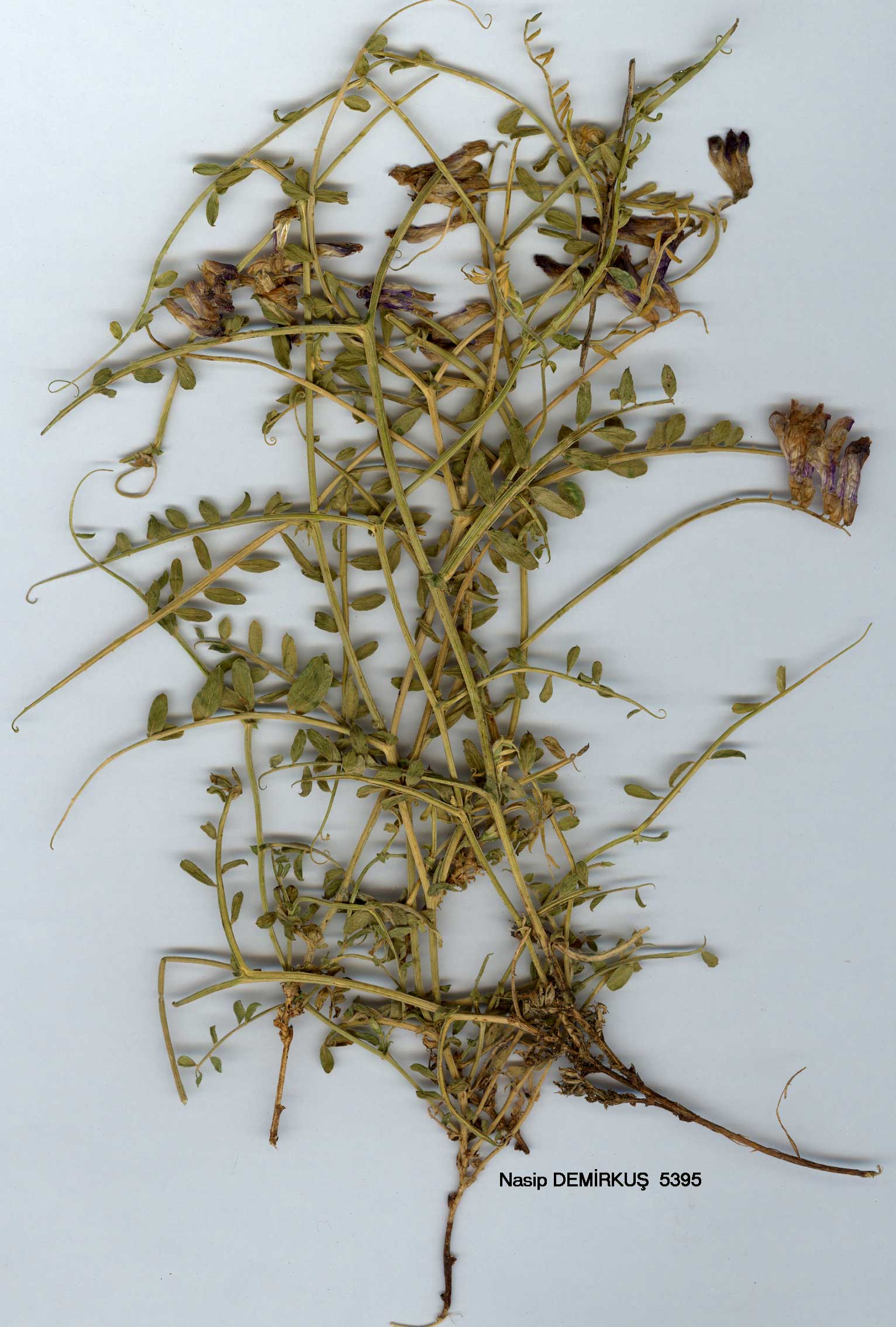| Fabaceae |
|---|

Vicia alpestris STEV. subsp. alpestris STEV. |

Vicia alpestris STEV. subsp. alpestris STEV. |
 Vicia alpestris STEV. subsp. alpestris STEV. |
Vicia L. |
| V. alpestris Stev. in Mem.Soc.Nat. Mosc.4:93 (1813).Syn:V.anisodonta 3oiss.,Diagn. ser. 2(2): 41 (1856). Map 60, p. 297. Perennial, densely adpressed-canescent or villous-pubescent. Stems ascending from creeping caudiculi, 5-40 cm. Leaves mostly ending in a slender, simple or branched tendril, the lowest leaves often only mucronate; leaflets 4-8-paired. ovate or oblong-elliptic. 4-14 x 2.5-7 mm, ± obtuse, weakly or strongly mucron-ate; stipules semi-hastate, the lower ones often sparsely-toothed. Racemes long-peduncled, broadly oblong, closely 3-9-flowered. Calyx purplish, 5-6 mm. the lowest tooth shorter than tube. Corolla violet-blue or reddish purple. 14-20 mm. Style laterally compressed. Legume oblong, 25-30 x 6-8 mm, always glabrous, obliquely truncate above, several-seeded. 1.Indumentum shortly villosulous-pubescent; leaves usually with a short straight mucro; calyx with the lowest tooth usually about half as long as tube (rarely nearly as long) subsp. alpestris 1.Indumentum densely adpressed-canescent or sericeous; leaves with a broader, recurved mucro: calyx teeth shorter, usually less than half as long as tube subsp. hypoleuca subsp. alpestris. Syn: V. purpurea Stev. in Mem. Soc. Nat. Mosc. 4:93 (1813); V. azurea Koch in Linnaea 15:66 (1847). Ic: Fl. Azerb. 5: t. 47 (1954). Fl. 7-9. Rocky slopes, 2700-3300 m. Described from the E. Caucasus. S.E. Anatolia. B9 Van: Artos Da., 2700 m, McNeill 730! Kavuşşahap Da., 3300 m, D. 23111! Siirt: Müküş, Kotschy 820! C1O Hakkari: Cilo Tepe, 2900 m, D.24025! Caucasia. Turkish material has somewhat broader leaflets than in Caucasian specimens seen. |